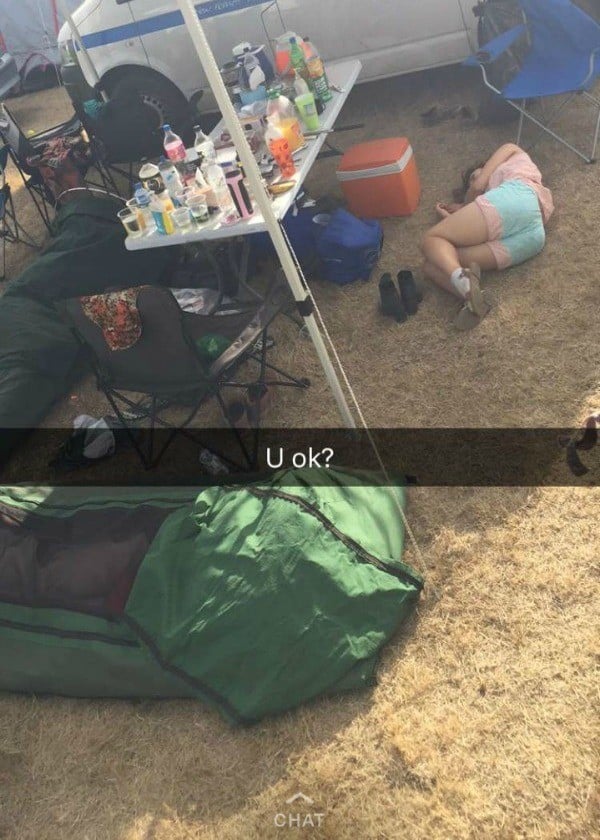
I’m sitting at the dining table, eating dinner on a Sunday night and I see I’ve received a text message from a number I don’t recognise.
It’s a photo of me.
Looking at it, I can tell it was taken a few months ago while I was at a festival. I’m in my pink and blue pyjamas and asleep outside my tent.
The person taking the photo couldn’t have been more than five metres away, probably in the next campsite over.

I'm guessing it's a screenshot Snapchat, as the writing across the photo says: 'U ok?' There's a another message that repeats the question: 'U OK?'
Top Comments
Telling the police is all well and good, but SO often they don't actually do anything!! Obviously slightly different because not a stranger, but I had an ex keep harassing me and stalking me after we broke up. I had dozens of messages about "I'm going to be waiting for you when you finish work. You wont know when I'll be there." (I worked arvos and finished at midnight) and "I'll get you". Apparently without an express threat "I'll get you" could be interpreted as "I'll get you a cup of tea" and they wouldnt do anything. I sure felt threatened, and this went on for a long time, but apparently that wasn't enough until he ACTUALLY did something. Luckily he never did, because he was a coward, but I didn't go anywhere alone for a long time.
This is terrible! I really hope this never happens to you again, but if it does either go to a different police station or demand to speak to someone more senior. The police are not allowed to fob you off like that. I hope all is okay now! x
I've had similar & it was terrifying... For over a year I had a blocked number calling me & saying the most VILE things to me. I begged them to stop & I stopped answering... I tracked down the phone number (by changing my VM stating I will answer if they unblock) & I reported it to the police... They said there was nothing they could do because he hadn't physically attacked me... I took it into my own hands, had my contacts at a telecommunications company look up the name & then I stated it when he called next... He hung up quick smart & never called back
WHY should it have to come to being physically threatened or attacked before something is done about these animals?
I would classify your situation as stalking, which what you described meets the criteria. I did a masters thesis on stalking so I know my stuff ;).